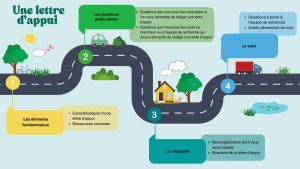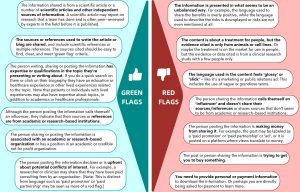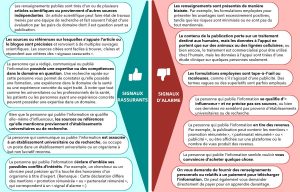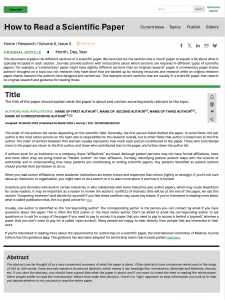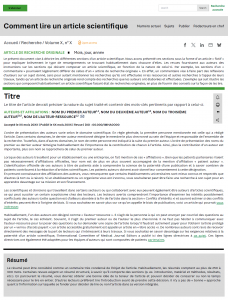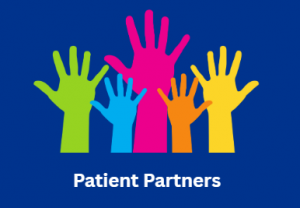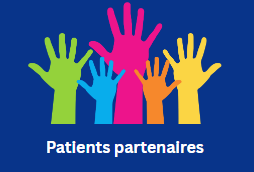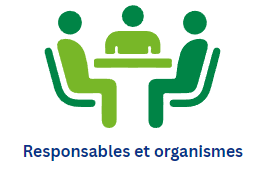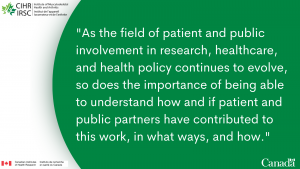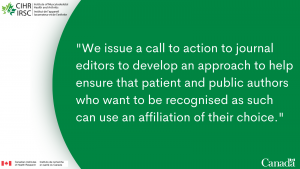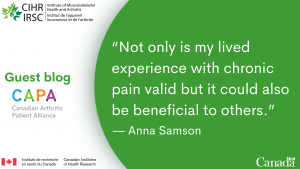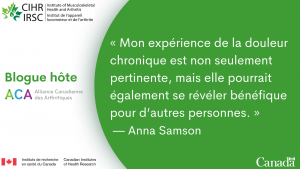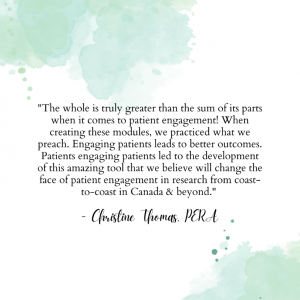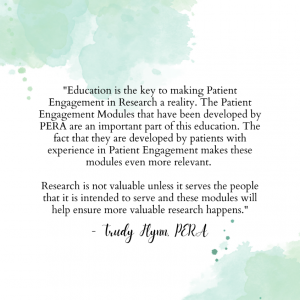Le français suit / French follows
Written by Trudy Flynn, Patient Partner and Tianna Magel, Project and Research Analyst at CIHR-IMHA
Edited by Hetty Mulhall
A recent review found that one of the key reasons researchers participate in patient engagement is to do “better research” (Pratte et al., 2023). Yet there is still insufficient awareness of patient engagement in academia which means that the research community is still falling short when it comes to meaningfully integrating patient perspectives. Less than half (36.5%) of the health researchers surveyed in a Canadian study agreed that patients and the public are being meaningfully engaged in research (Crockett et al., 2019). Begging the question: How can we increase awareness on the importance of meaningfully engaging patient partners in research?
Patient Engagement in research within Canada is not a new phenomenon, and has been defined by the Canadian Institutes of Health Research (CIHR) as patients being “actively engaged in governance, priority setting, developing the research questions, and even performing parts of the research itself” (Canadian Institutes of Health Research, 2019). The value of patient engagement is also not inconsequential and has demonstrated several benefits, including improved clinical and research relevance, continued engagement in care, and facilitation of knowledge translation initiatives (Domecq et al., 2014; Forsythe et al., 2019; McVey et al., 2023; Richards et al., 2024).
To effectively move the dial on patient engagement best practices, and in turn, do “better research”, increased educational initiatives are needed to raise awareness on the value of involving patients, not as participants (e.g., someone signing up to try a new treatment), but as members of a research team.
To address this issue, in collaboration with patient partners and CIHR institutes, we developed virtual and in-person 101 workshops on patient engagement in research. Therefore, the purpose of this blog is threefold: 1) to share our learnings from the workshop and peer review so that other organizations might use these approaches, 2) to flag the need for further education on patient engagement in research, and 3) to highlight the importance of patient partners as co-creators and co-facilitators of the workshop and peer review materials.
Peer Review
To gauge researcher interest in the workshop and the value they would extract from engagement in the session, we developed an online form or ‘expression of interest’. This form asked applicants to detail their previous patient partner engagement experiences, how participation in the workshop would strengthen their research skills, and how they intended to amplify their learnings from the workshop.
Following submission, each application went through a peer review process where it was carefully reviewed and ranked by several peer reviewers. Our peer review process was co-designed by patient partners, as with all steps in this project, and was unique in that it was primarily patient partner led and driven. This is contrary to typical peer review panels which are often made up of individuals from more traditional academic roles. Indeed, our peer review team was composed of a diverse panel of six patient partners from across Canada and three members from CIHR’s Institute of Musculoskeletal Health and Arthritis (IMHA) and Institute of Genetics (IG).
For the actual peer review itself, two patient partners and a member of CIHR were randomly assigned to review and rank written responses from each application using a 5-point evaluation rubric. Where possible, our rubric was intended to support an objective and unbiased assessment of applicant written responses. In addition to the rubric, several supplementary materials were developed to support peer reviewers with the evaluation process, including a detailed text explanation of rubric scores as well as a video tutorial, as it can be beneficial to provide information in a variety of formats. Using these materials, patient partner reviewers then scored the written responses of their assigned applicants. Final reviewer scores (i.e., two patient partner scores and one CIHR score) for each applicant were combined to create an average score out of 5. A score of 3.0 was determined to be the cut-off for admittance to the workshop, and applicants who did not receive an average score above this were sent to full panel review.
Following peer review, reviewers attended a panel meeting to discuss low scoring applicants and whether their application merited admission to the patient engagement workshop. This discussion was primarily patient partner led, with members of CIHR adding additional comments when needed. It is important to highlight that the high attendance and engagement observed in the workshop may be attributed to the mandatory expression of interest and peer review process. Arguably, applicants felt they had earned their place at the workshop rather than having been automatically accepted so we may have seen greater commitment levels as a result.
Patient Engagement in Research Workshop
The workshop itself was designed in collaboration with IMHA’s Patient Engagement Specialist, Dr. Dawn Richards. This was a 2-hour interactive session offered twice on two consecutive days in Halifax, Nova Scotia, in both hybrid and in-person only formats. Our hybrid session was offered on the first day as a means of facilitating accessible attendance for those who could not attend in person. Additionally, our in-person attendance was also located in an accessible building and classroom, and attendee masking was required.
Each session of the workshop opened with patient partner introductions and the sharing of personal stories and experiences within a research team, which served as a means to situate attendees to the unique expertise and roles of patient partners in research, and key things they should know about patient engagement. Patient partner stories were then followed by breakout group discussions which were comprised of 4-5 attendees and a patient partner facilitator. With the help of patient partner facilitators, and using basic science and clinical case studies, breakout groups were designed to facilitate the discussion of patient engagement throughout the entire research cycle. Attendees used the small group opportunity with patient partners to ask questions and gain further clarity about patient engagement within research. This was especially helpful for attendees in areas of research in which patient engagement is not highly utilized yet, and included questions about where to find and engage patient partners in their respective areas of research. Indeed, some groups utilized the case studies as a framework for discussion, whereas several others had more of a free-flowing Q and A session, choosing to not stick with the case studies. Both approaches were supported by the workshop facilitators.
Following the case study discussion, one member from each breakout group was asked to briefly summarize what their group had discussed. The workshop then closed with a discussion of several attendee questions as well as the sharing of accessible resources that researchers and trainees could access. As is often the case with hybrid workshops, we experienced technical difficulties with the virtual group session. Although the session leader and co-facilitators were very mindful of including virtual attendees, the supportive technology did not function well within the space, and struggled to detect the direction of the sounds often highlighting people incorrectly on the video call. These learnings will be used in future hybrid iterations of our workshop.
At the end of the workshop, attendees and patient partners were asked to complete a survey to gather feedback on areas of success and improvement for future offerings of the workshop. Attendees expressed a high degree of satisfaction with the format and delivery of the workshop and felt strongly that the interactive patient partner panel was helpful to their learning (see Table 1). All patient partners involved in the peer view and workshop felt they were able to express their views freely, and that the development and delivery of the workshop was a collaborative experience. Overall, both attendees and patient partners expressed a high degree of enthusiasm, with most highlighting a desire for a longer workshop to facilitate a deeper discussion and exploration of patient engagement in research.
Table 1. Attendee Demographics and Workshop Feedback
| Demographics/ Feedback |
Attendees (n=29)a |
| Attendance |
|
| In-Person |
18 (62%) |
| Virtual |
11 (38%) |
| Perspective brought to workshop* |
|
| Researcher |
14 (48%) |
| Trainee |
14 (48%) |
| Other |
6 (21%) |
| “The interactive patient partner panel was helpful to my learning.” |
|
| Strongly Agree |
18 (62%) |
| Agree |
9 (31%) |
| Neutral |
2 (7%) |
| Dissatisfied |
– |
| Very Dissatisfied |
– |
| Unsure |
– |
| Overall satisfaction with the format and delivery of the Patient Engagement 101 workshop |
|
| Very Satisfied |
12 (41%) |
| Satisfied |
13 (45%) |
| Neutral |
4 (14%) |
| Dissatisfied |
– |
| Very Dissatisfied |
– |
| “I learned something new today that will be useful for my future approach in patient partnership or patient engagement.” |
|
| Strongly agree |
16 (55%) |
| Agree |
11 (38%) |
| Neutral |
2 (7%) |
| Disagree |
– |
| Strongly Disagree |
– |
- Responses reflect attendees that attended one of the workshops held over two days; *Can select more than one perspective.
Looking to the future / Lessons Learned
Including patient partners in research not only enriches the research process, it ensures patient partners have a voice in shaping research that impacts their lives. Patient engagement provides opportunities for learning, skill development, and networking, and some patient partners also express personal fulfillment through meaningful contributions to the research process. This involvement ensures lived experiences are represented, fostering more patient-centered outcomes.
However, our discussions with researchers over the course of our workshops demonstrated that a gap remains in knowledge and understandings of patient partner engagement within the academic and research community, and especially in making a distinction between patient engagement versus patient participation in a study. This sentiment was shared by several of our patient partners and is highlighted by Trudy Flynn, a patient partner peer reviewer and workshop facilitator, who stated:
“Everyone seems to assume that patient partner engagement is common knowledge, but the reality is that many are still unaware of its importance and impact in healthcare. We need to break this assumption and foster a more inclusive understanding with workshops like this one. If we can educate just one researcher about the importance of patient partner engagement, it can create a snowball effect, leading to broader awareness and more meaningful collaboration in the research community.”
For many trainees and researchers, this workshop was often their first exposure to any sort of formal education or knowledge dissemination about patient engagement. A continued emphasis on educational initiatives is needed if we are to ensure appropriate understanding and inclusion of patient partners within the research continuum.
This workshop highlighted the importance of patient engagement in shaping research to meet real-world needs. Effective communication between researchers and patient partners emerged as a crucial component for fostering collaboration. Additionally, the workshop underscored the value of diverse perspectives in enriching discussions and the importance of hybrid workshops when only hosted at one time. There may also be a benefit to hosting the content as virtual only or in-person only in certain settings, given that we can never truly mitigate the risk of issues with hybrid technology. Overall, the lessons learned will help improve future workshops and enhance the collaboration between researchers and patient partners.
Based on preliminary feedback, the most recent iterations of our workshop have shifted focus to offering a Q & A session in addition to, or instead of, case studies whereby attendees can use the latter portion of the workshop to ask questions about patient partner engagement within their respective areas of research. Indeed, in our most recent October 2024 workshop, we implemented these changes and received very positive feedback. It is also important to note that diversity in patient partner backgrounds and experiences can serve as a means to enrich the peer review and workshop process, highlighting gaps and areas of further exploration. The diversity of our patient partner backgrounds (including several youth members) underscored gaps in knowledge and brought forth additional considerations for equity and inclusion. Further, during enrollment there was a large number of researchers and trainees that expressed an interest in virtual attendance. Upcoming sessions of our workshop are now being offered virtually as a means to ensure accessible attendance for both patient partners and researchers across Canada.
Looking to the future, we aim to continue offering workshops on patient engagement and, ultimately, move the dial on patient engagement in research. However, achieving this goal necessitates ongoing efforts from the entire research community to establish a strong foundation of awareness and education regarding the significance of patient engagement in research.
For any questions related to our patient engagement workshop or for access to our peer review and workshop materials, please email: contact@pxphub.org or imha-iala@cihr-irsc.gc.ca
References
Canadian Institutes of Health Research. (2019). Patient engagement. https://cihr-irsc.gc.ca/e/45851.html
Crockett, L. K., Shimmin, C., Wittmeier, K. D. M., & Sibley, K. M. (2019). Engaging patients and the public in Health Research: experiences, perceptions and training needs among Manitoba health researchers. Research Involvement and Engagement, 5, 28. https://doi.org/10.1186/s40900-019-0162-2
Domecq, J. P., Prutsky, G., Elraiyah, T., Wang, Z., Nabhan, M., Shippee, N., Brito, J. P., Boehmer, K., Hasan, R., Firwana, B., Erwin, P., Eton, D., Sloan, J., Montori, V., Asi, N., Dabrh, A. M. A., & Murad, M. H. (2014). Patient engagement in research: A systematic review. BMC Health Services Research, 14(89), 1–9. https://doi.org/10.1186/1472-6963-14-89/FIGURES/3
Forsythe, L. P., Carman, K. L., Szydlowski, V., Fayish, L., Davidson, L., Hickam, D. H., Hall, C., Bhat, G., Neu, D., Stewart, L., Jalowsky, M., Aronson, N., & Anyanwu, C. U. (2019). Patient Engagement In Research: Early Findings From The Patient-Centered Outcomes Research Institute. Health Affairs (Project Hope), 38(3), 359–367. https://doi.org/10.1377/HLTHAFF.2018.05067
McVey, L., Frost, T., Issa, B., Davison, E., Abdulkader, J., Randell, R., Alvarado, N., Zaman, H., Hardiker, N., Cheong, V. L., & Woodcock, D. (2023). Working together: reflections on how to make public involvement in research work. Research Involvement and Engagement, 9(1). https://doi.org/10.1186/S40900-023-00427-4
Pratte, M. M., Audette-Chapdelaine, S., Auger, A. M., Wilhelmy, C., & Brodeur, M. (2023). Researchers’ experiences with patient engagement in health research: a scoping review and thematic synthesis. Research Involvement and Engagement, 9(1), 22. https://doi.org/10.1186/S40900-023-00431-8
Richards, D. P., Twomey, R., Flynn, T., Hunter, L., Lui, E., Stordy, A., Thomas, C., & Khan, K. (2024). Patient engagement in a Canadian health research funding institute: implementation and impact. BMJ Open, 14(7), e082502. https://doi.org/10.1136/BMJOPEN-2023-082502
Par Trudy Flynn, patiente partenaire, et Tianna Magel, analyste de projet et de recherche à l’Institut de l’appareil locomoteur et de l’arthrite des IRSC
Révisé par Hetty Mulhall
Selon une étude récente, l’une des principales raisons pour lesquelles les chercheurs s’engagent dans la mobilisation des patients est d’améliorer la recherche (Pratte et collab., 2023). Pourtant, la sensibilisation à la mobilisation des patients dans le milieu universitaire est toujours insuffisante, ce qui signifie que le milieu de la recherche est toujours à la traîne lorsqu’il s’agit de véritablement prendre en compte les points de vue des patients. Moins de la moitié (36,5 %) des chercheurs en santé sondés lors d’une étude canadienne ont convenu que les patients et le public jouent un rôle significatif dans la recherche (Crockett et collab., 2019). La question suivante se pose : Comment pouvons-nous accroître la sensibilisation à l’importance de faire intervenir les patients partenaires de façon significative dans la recherche?
La participation des patients à la recherche au Canada n’est pas un phénomène nouveau. Les Instituts de recherche en santé du Canada (IRSC) l’ont défini comme suit : « Les patients […] peuvent participer activement à la gouvernance, à l’établissement des priorités, à l’élaboration des questions de recherche et même [à] la réalisation de certaines parties de la recherche en soi. » (Instituts de recherche en santé du Canada, 2019). La valeur de la mobilisation des patients n’est d’ailleurs pas sans importance et a démontré plusieurs avantages, dont une plus grande pertinence de la recherche et des essais cliniques, la participation continue aux traitements et la facilitation des initiatives d’application des connaissances (Domecq et collab., 2014; Forsythe et collab., 2019; McVey et collab., 2023; Richards et collab., 2024).
Afin de promouvoir de manière efficace les pratiques exemplaires en matière de mobilisation des patients et, par conséquent, d’améliorer la recherche, il est nécessaire de mettre en œuvre des initiatives de formation plus poussée visant à sensibiliser davantage les intervenants à la valeur de faire participer les patients à la recherche non en tant que participants (p. ex. une personne qui s’inscrit pour essayer un nouveau traitement), mais en tant que membres à part entière d’une équipe de recherche.
Pour aborder cette question, en collaboration avec des patients partenaires et les instituts des IRSC, nous avons élaboré des ateliers d’introduction virtuels et en personne sur la participation des patients à la recherche. Ainsi, l’objectif du présent blogue est triple : 1) transmettre les leçons tirées de l’atelier et de l’évaluation par les pairs afin que d’autres organisations puissent utiliser ces approches; 2) signaler la nécessité d’accroître la formation sur la participation des patients à la recherche; 3) souligner l’importance des patients partenaires en tant que coanimateurs de l’atelier et cocréateurs des documents utilisés lors de l’évaluation par les pairs.
Évaluation par les pairs
Afin d’évaluer l’intérêt des chercheurs à l’égard de l’atelier et la valeur potentielle de leur participation à la séance, un formulaire de déclaration d’intérêt en ligne a été élaboré. Dans ce formulaire, les candidats étaient invités à décrire de manière détaillée leur expérience antérieure en ce qui touche la mobilisation des patients partenaires, la façon dont leur participation à l’atelier contribuerait au renforcement de leurs compétences en recherche et les moyens qu’ils prévoient mettre en œuvre pour consolider les apprentissages tirés de l’atelier.
Les demandes présentées ont fait l’objet d’un processus d’évaluation par les pairs, au cours duquel chacune d’entre elles ont été soigneusement évaluées et classées par plusieurs évaluateurs. Notre processus d’évaluation par les pairs, comme chaque étape du projet, a été élaborée en collaboration avec des patients partenaires, mais sa particularité réside dans le fait qu’il a été principalement dirigé par ces derniers. Cette approche se démarque de la sélection habituelle des membres des comités d’évaluation par les pairs, qui sont généralement constitués de personnes qui occupent des fonctions traditionnelles au sein du milieu universitaire. Notre équipe d’évaluation par les pairs était composée d’un groupe diversifié de six patients partenaires provenant de l’ensemble du Canada et de trois membres de l’Institut de l’appareil locomoteur et de l’arthrite (IALA) ou de l’Institut de génétique (IG) des IRSC.
Lors de l’évaluation par les pairs proprement dite, deux patients partenaires et un membre des IRSC ont été assignés de manière aléatoire à l’évaluation et au classement des réponses écrites fournies dans chaque demande à l’aide d’une grille d’évaluation à cinq points. Lorsqu’il était possible de le faire, notre grille d’évaluation visait à appuyer une évaluation objective et impartiale des réponses écrites fournies par les candidats. Plusieurs ressources complémentaires ont été élaborées, en plus de la grille d’évaluation, afin d’aider les évaluateurs durant le processus, notamment un document explicatif détaillé sur la cotation ainsi qu’un tutoriel vidéo. Ainsi, nous reconnaissions que fournir de l’information dans divers formats pouvait s’avérer utile. À l’aide de ces ressources, les évaluateurs agissant comme patients partenaires ont ensuite attribué des cotes aux réponses écrites fournies par les candidats qui leur avaient été confiés. Les cotes finales accordées à chaque candidat par les évaluateurs, soit deux cotes attribuées par les patients partenaires et une par les membres des IRSC, ont été combinées pour obtenir une cote moyenne sur 5. La cote de 3,0 a été établie comme le seuil à dépasser pour être admis à l’atelier, et les demandes dont la cote moyenne était inférieure ou égale à 3,0 ont été redirigées pour une évaluation complète par un comité.
À l’issue de l’évaluation par les pairs, les évaluateurs ont participé à une réunion de groupe d’experts afin de discuter des demandes n’ayant pas obtenu la cote de passage et, ainsi, déterminer si elles méritaient d’être admises à l’atelier. Cette discussion était dirigée principalement par les patients partenaires, et les membres des IRSC ont apporté des commentaires complémentaires au besoin. Il convient de souligner que le taux élevé de participation à l’atelier peut être attribuable aux processus obligatoires de déclaration d’intérêt et d’évaluation par les pairs. On peut supposer que les candidats avaient le sentiment d’avoir mérité leur place à l’atelier plutôt que d’avoir été acceptés automatiquement, ce qui pourrait expliquer les niveaux de participation plus élevés constatés.
Atelier « Participation des patients à la recherche »
L’atelier a été conçu en collaboration avec la Dre Dawn Richards, spécialiste en mobilisation des patients à l’IALA. Il s’agissait d’une séance interactive d’une durée de deux heures, offerte à deux reprises sur deux jours consécutifs à Halifax, en Nouvelle-Écosse, dans un format hybride et en personne. La séance hybride a été organisée le premier jour afin de faciliter l’accès à la séance pour les participants ne pouvant pas y assister en personne. Par ailleurs, la séance en personne s’est déroulée dans un bâtiment et une salle de classe accessibles où le port du masque était obligatoire pour les participants.
Chaque séance a commencé par des présentations par des patients partenaires, qui ont partagé leurs expériences personnelles au sein d’équipes de recherche, permettant ainsi de sensibiliser les participants à l’expertise et aux rôles uniques des patients partenaires dans la recherche. Ces témoignages servaient également à informer les participants sur les principales notions à connaître sur la mobilisation des patients. Les témoignages des patients partenaires ont été suivis de discussions en petits groupes composés de quatre ou de cinq participants, sous la supervision d’un patient partenaire responsable de l’animation. Ces groupes de discussion ont été constitués pour faciliter des échanges sur la mobilisation des patients tout au long du cycle de recherche, en s’appuyant sur la science fondamentale et des études de cas cliniques. Les participants ont tiré profit des petits groupes avec des patients partenaires pour poser des questions et obtenir des précisions sur la participation des patients à la recherche. Ces échanges se sont révélés particulièrement utiles pour les participants œuvrant dans les domaines de recherche où la mobilisation des patients n’est pas encore largement mise à profit. Les participants ont également profité de l’occasion pour s’informer sur les sources de recrutement de patients partenaires et la façon de les faire participer à la recherche dans leur domaine respectif. Certains groupes ont utilisé les études de cas comme cadre de discussion, tandis que d’autres ont opté pour des périodes de questions plus libres plutôt que de s’en tenir aux études de cas. Les deux approches ont reçu l’approbation des personnes chargées de l’animation de l’atelier.
À l’issue de la discussion sur les études de cas, un membre de chaque sous-groupe a été invité à présenter un résumé des échanges au sein de son groupe respectif. L’atelier s’est conclu par une discussion sur diverses questions des participants et par la mise en commun de ressources accessibles par les chercheurs et les stagiaires. Comme il arrive souvent lors d’ateliers hybrides, des difficultés techniques ont été rencontrées avec les discussions virtuelles en petits groupes. Malgré les efforts diligents déployés par la personne responsable de l’animation et les coanimateurs pour assurer l’inclusion des participants en mode virtuel, l’outil technologique n’a pas fonctionné de manière optimale dans l’environnement prévu et avait de la difficulté à détecter la provenance des sons, ce qui a fait en sorte que les mauvaises personnes apparaissaient à l’avant-plan lors des interventions durant la vidéoconférence. Ces enseignements seront mis à profit dans les futures itérations hybrides de notre atelier.
À l’issue de l’atelier, les participants et les patients partenaires ont été invités à répondre à un sondage visant à recueillir des commentaires sur les aspects réussis et ceux à améliorer pour les prochaines séances. Les participants ont exprimé un niveau élevé de satisfaction quant au format et à la présentation de l’atelier, et ont manifesté une forte conviction quant à l’utilité du comité interactif de patients partenaires pour leur apprentissage (voir le tableau 1). Tous les patients ayant pris part à l’atelier et à l’évaluation par les pairs ont rapporté avoir eu la possibilité d’exprimer librement leur point de vue, et ont perçu la conception et la présentation de l’atelier comme une expérience collaborative. En général, les participants et les patients partenaires ont fait part d’un enthousiasme marqué, la majorité ayant manifesté le souhait de prolonger la durée de l’atelier afin de permettre une discussion et une exploration plus approfondies de la participation des patients à la recherche.
Tableau 1. Données démographiques des participants et commentaires sur l’atelier
| Données démographiques et rétroaction |
Participants (n=29)a |
| Participation |
|
| En personne |
18 (62 %) |
| Virtuelle |
11 (38 %) |
| Perspective présentée à l’atelier* |
|
| Chercheur |
14 (48 %) |
| Stagiaire |
14 (48 %) |
| Autre |
6 (21 %) |
| « Le comité interactif de patients partenaires a été utile à mon apprentissage. » |
|
| Entièrement d’accord |
18 (62 %) |
| D’accord |
9 (31 %) |
| Ni d’accord ni en désaccord |
2 (7 %) |
| En désaccord |
– |
| Entièrement en désaccord |
– |
| Je ne sais pas |
– |
| Satisfaction globale à l’égard de la formule et de la présentation de l’atelier d’introduction à la participation des patients à la recherche |
|
| Très satisfait |
12 (41 %) |
| Satisfait |
13 (45 %) |
| Ni satisfait ni insatisfait |
4 (14 %) |
| Insatisfait |
– |
| Très insatisfait |
– |
| « Aujourd’hui, j’ai appris quelque chose de nouveau qui me sera utile pour mon approche future en ce qui concerne le partenariat avec les patients ou leur mobilisation. » |
|
| Entièrement d’accord |
16 (55 %) |
| D’accord |
11 (38 %) |
| Ni d’accord ni en désaccord |
2 (7 %) |
| En désaccord |
– |
| Entièrement en désaccord |
– |
- Les réponses proviennent des participants ayant assisté à au moins un des ateliers organisés sur deux jours.
* Les participants peuvent sélectionner plusieurs perspectives.
Regard vers l’avenir et leçons apprises
L’inclusion des patients partenaires dans la recherche non seulement enrichit les travaux qui en tirent parti, mais garantit aussi que les patients partenaires ont une voix influente dans l’élaboration des recherches qui ont une incidence directe sur leur vie. La participation des patients à la recherche offre des occasions d’apprentissage, de développement des compétences et de réseautage. En outre, certains patients partenaires ont manifesté leur satisfaction personnelle à l’égard de leur contribution significative au processus de recherche. Cette participation garantit que leurs expériences concrètes sont représentées, ce qui favorise des résultats davantage axés sur les patients.
Or, les échanges avec les chercheurs lors des ateliers ont mis en évidence des lacunes persistantes au sein des milieux universitaire et scientifique en ce qui concerne les connaissances et la compréhension de la mobilisation des patients partenaires. Ces lacunes sont particulièrement notables sur le plan de la distinction entre la mobilisation des patients et la simple participation à une étude. Ce sentiment a été partagé par plusieurs des patients partenaires et a été mis en évidence par Trudy Flynn, patiente partenaire agissant comme évaluatrice et animatrice de l’atelier, qui a déclaré :
« On semble supposer que l’ensemble du milieu de la recherche est familier avec le concept de mobilisation des patients partenaires. En réalité, bon nombre d’acteurs ignorent encore son importance et ses retombées sur les soins de santé. Nous devons rejeter cette hypothèse et favoriser une compréhension plus inclusive grâce à des ateliers comme celui-ci. Si nous pouvons sensibiliser un seul chercheur à l’importance de la mobilisation des patients partenaires, cela pourrait faire boule de neige et conduire à une prise de conscience plus large et à une collaboration plus significative dans le milieu de la recherche. »
Pour un nombre significatif de stagiaires et de chercheurs, cet atelier constituait souvent leur première exposition à une forme d’initiative de formation officielle ou de dissémination des connaissances sur la participation des patients à la recherche. Il faut continuer de mettre l’accent sur les initiatives de formation si nous voulons assurer la compréhension et l’inclusion appropriées des patients partenaires dans le continuum de la recherche.
L’atelier a mis en lumière l’importance de la contribution des patients à l’orientation de la recherche pour répondre aux besoins réels. La communication efficace entre les chercheurs et les patients partenaires est devenue un élément crucial pour favoriser la collaboration. De plus, l’atelier a souligné la valeur des diverses perspectives pour enrichir les discussions et l’importance des ateliers hybrides lorsqu’ils ne sont offerts qu’une seule fois. Il pourrait également être avantageux de présenter dans certains milieux le contenu en format virtuel ou en personne seulement, étant donné que nous ne sommes jamais vraiment parvenus à atténuer le risque de problèmes liés à la technologie hybride. Dans l’ensemble, les leçons apprises aideront à améliorer les ateliers à venir ainsi que la collaboration entre les chercheurs et les patients partenaires.
En s’appuyant sur les premiers commentaires reçus, nous avons accordé la priorité, lors des plus récentes itérations de notre atelier, à offrir une période de questions en complément ou au lieu d’un examen d’études de cas, où les participants peuvent utiliser la dernière partie de l’atelier pour poser des questions sur la participation des patients partenaires à la recherche dans leur domaine respectif. En effet, lors de notre plus récent atelier d’octobre 2024, nous avons mis en œuvre ces changements et reçu des commentaires très positifs. Il est également important de noter que les origines et expériences diversifiées des patients partenaires peuvent servir à enrichir le processus d’évaluation par les pairs et l’atelier en mettant en évidence les lacunes et les domaines à explorer davantage. Les expériences diversifiées de nos patients partenaires (y compris plusieurs jeunes membres) a fait ressortir des lacunes dans les connaissances et a soulevé d’autres questions sur les plans de l’équité et de l’inclusion. De plus, au cours de l’inscription, un grand nombre de chercheurs et de stagiaires ont manifesté un intérêt pour la participation virtuelle. Les séances à venir de notre atelier sont maintenant offertes virtuellement afin de faciliter l’accès à l’atelier pour les patients partenaires et les chercheurs dans l’ensemble du Canada.
Pour ce qui est de l’avenir, nous visons à continuer d’offrir des ateliers sur la mobilisation des patients et, au bout du compte, à faire avancer la participation des patients à la recherche. Toutefois, pour atteindre cet objectif, il faut que l’ensemble du milieu de la recherche déploie des efforts soutenus pour établir une base solide de sensibilisation et de formation au sujet de l’importance de la participation des patients à la recherche.
Si vous avez des questions au sujet de notre atelier sur la participation des patients à la recherche ou souhaitez avoir accès aux documents utilisés lors de l’évaluation par les pairs, veuillez écrire à contact@pxphub.org ou à imha-iala@cihr-irsc.gc.ca.
Références
CROCKETT, L. K., et collab. « Engaging patients and the public in Health Research: experiences, perceptions and training needs among Manitoba health researchers », Research Involvement and Engagement, vol. 5, no 28, 2019. doi : 10.1186/s40900-019-0162-2
DOMECQ, J. P., et collab. « Patient engagement in research: A systematic review », BMC Health Services Research, vol. 14, no 89, 2014, p. 1-9. doi : 10.1186/1472-6963-14-89/FIGURES/3
FORSYTHE, L. P., et collab. « Patient Engagement In Research: Early Findings From The Patient-Centered Outcomes Research Institute », Health Affairs (Project Hope), vol. 38, no 3, 2019, p. 359-367. doi : 10.1377/HLTHAFF.2018.05067
INSTITUTS DE RECHERCHE EN SANTÉ DU CANADA. Engagement des patients, [En ligne], 2019. [https://cihr-irsc.gc.ca/f/45851.html]
MCVEY, L., et collab. « Working together: reflections on how to make public involvement in research work », Research Involvement and Engagement, vol. 9, no 1 2023. doi : 10.1186/S40900-023-00427-4
PRATTE, M., et collab. « Researchers’ experiences with patient engagement in health research: a scoping review and thematic synthesis », Research Involvement and Engagement, vol. 9, no 22, 2023. doi : 10.1186/S40900-023-00431-8
RICHARDS, D. P., et collab. « Patient engagement in a Canadian health research funding institute: implementation and impact », BMJ Open, vol. 14, no 7, e082502, 2024. doi : 10.1136/BMJOPEN-2023-082502

